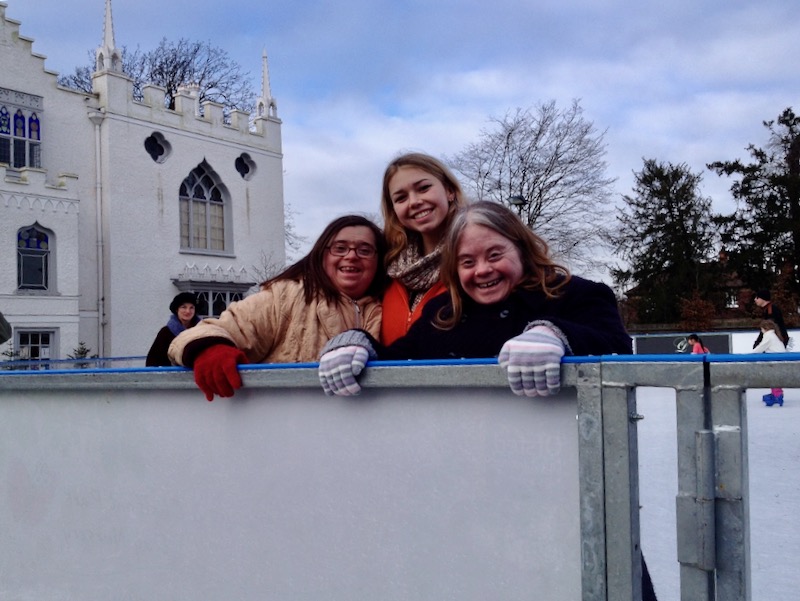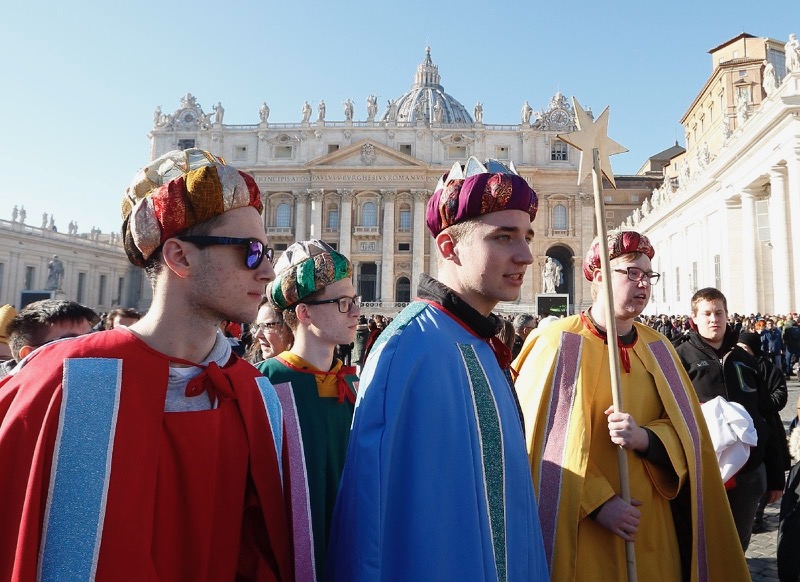So it ends with a scarcely whimper. Epiphanytide, the culmination of the feast of Christmas, is upon us. Nowadays, if the conclusion of the Twelve Days is marked at all, it’s by the taking down of the drooping and dropping Christmas tree that’s been standing in the corner of the living room since the beginning of Advent, if not earlier. The oft-repeated superstition that it’s bad luck to leave decorations up after Twelfth Night adds urgency to the task.
But it needn’t be this way. Twelfth Night was – and in many Catholic countries still is – one of the three great peaks of the Christmas festivities, its celebration matching and even exceeding those of Christmas Day and New Year’s Day. Its diminished status in twenty-first-century Britain is no better shown by the confusion about when Twelfth Night actually falls: is it 5 or 6 January?
As I’ll explain it’s most definitely the latter: the feast of the Epiphany of the Lord. Nor does this great holy day actually represent the conclusion of Christmas and in centuries past it certainly wasn’t the day that homes and churches would be denuded of their midwinter greenery.
I take great delight in wishing people a merry Christmas throughout the Twelve Days. It isn’t just because I’m an antiquary (in every sense of the word and I even have the tweeds to prove it) but because I think the joy, goodwill and celebrations of the festive season, which started with the Vespers on Christmas Eve afternoon, are well worth sustaining into the early days of the new year. The fact that we don’t do this today is because our modern, market-oriented merrymaking has already lasted for a month by Christmas Day. Fatter, poorer and a bit liverish, many are heartily bored of all this by New Year’s Eve and the final, hedonistic Christmas blow out.
But this is very much a modern innovation and doesn’t really take into account why Christmas is such a big deal in the first place – the need to brighten up and generally enliven the darkest time of the year. You don’t need me to remind you that January is almost as dark, and often much colder, than December.
It was something that our medieval and early modern ancestors understood all too well.
Hence the importance of the feast of the Epiphany on 6 January, or “little Christmas” as it was sometimes called. Meaning “appearance” or “manifestation” in Greek, observance of the Epiphany goes back to at least the second century. The first few centuries of its celebration commemorated various instances in the life of Christ, including His baptism, the wedding feast at Cana and the Feeding of the Five Thousand. But all these were supplanted when the feast became associated with the visit of the Magi to the infant Christ, an event described in the gospel of Matthew. Of unspecified number, these wise men were rapidly conflated with the three kings, who according to the Psalms, would honour the Messiah.
Veneration of the Three Kings and celebration of Epiphany was turbo-charged in western Christendom by the “translation,” or moving, of the purported relics of the Magi from Milan to Cologne in 1164 by the Holy Roman Emperor, Frederick Barbarossa. The citizens of Cologne love any excuse to party, and to this day, the celebrations, sacred and secular, held there on the feast of the Kings are something to behold. The Epiphany remains a public holiday, characterised by fun and frippery, in large parts of Catholic Europe.
In medieval England, religious services on the day were every bit as spectacular and dramatic as those celebrated in honour of the Nativity. The feasting, carousing and entertainments of Twelfth Night were often the most lavish and indulgent of the whole Christmas season. Costumed “mummers” entertained the great and the good in their great halls. In 1413, Lollards, proto-Protestant supporters of the theologian John Wycliff, hatched a plot to disguise themselves as mummers and kidnap King Henry V while participated partook in Twelfth Night celebrations in the great hall of Eltham Palace. A century later the young Henry VIII hosted a spectacular Twelfth Night masque at the palace.
Although the Reformation put paid to the masses and liturgical drama of Epiphany morning, the biblical status of the feast and its royal associations ensured that the fun, feasting and games of Epiphany and Twelfth Night persisted in Protestant England.
Still in place for these celebrations was the greenery brought indoors on Christmas Eve. Indeed, as verse by Robert Herrick, the seventeenth-century Anglican clergyman and poet makes clear, these decorations remained up until Candlemas Eve, or 1 February. A goblin was believed to inhabit each branch of holly, bay or rosemary left up after that day, doubtless the origin of the superstitions associated with past their sell-by-date decorations that persist to this day.
Falling on 2 February, exactly forty days after Christmas Day, the Feast of the Purification of the Blessed Virgin Mary, or Candlemas in English (so called because of the practice of blessing candles on that day) marked the true end of the Christmas cycle of feast days and observances. It even had its own late medieval carol, opening with the words: “Now haue a gud day, now have gud day!/I am Crystmas, and now I go away.”
The interval between the Epiphany and Candlemas was far from being the joyless, quasi-penitential season that January has become. Nicholas Blundell, the early eighteenth-century Lancashire Catholic gent I mentioned in an earlier column, enjoyed “Christmas cheer” well into late January. Communal ceremonies, celebrations and feasting marked “Plough Monday,” the first Monday after the Epiphany when ploughing, a key event in the agricultural year, commenced.
Alas, these traditions didn’t survive the nineteenth- and twentieth-century reinventions of Christmas. But I don’t think this makes any sense. There’s precious little joy in January at the best of times. This year the accelerating spread of Covid and the need for evermore-stringent restrictions only compounds the misery. Hence English Heritage is urging us to emulate our ancestors and keep our Yuletide decorations until 1 February. I’ll be following their wise advice. By the time my greenery and lights come down on Candlemas Eve, brighter days, in every sense, will be just around the corner.



 Loading ...
Loading ...
What do you think?
You can post as a subscriber user ...
User comments (1)
Very much a Northern European view of this time of year, but Christmas, New Year and Epiphany did not originate in Northern Europe. They originated much further south where the winter days are not as short, nor as cold. In the past, wealthy inhabitants of Rome would get out of the city in the summer - it's too hot. They would return for Autmn, Winter and Spring when the weather was more pleasant and, of course, have celebrations.